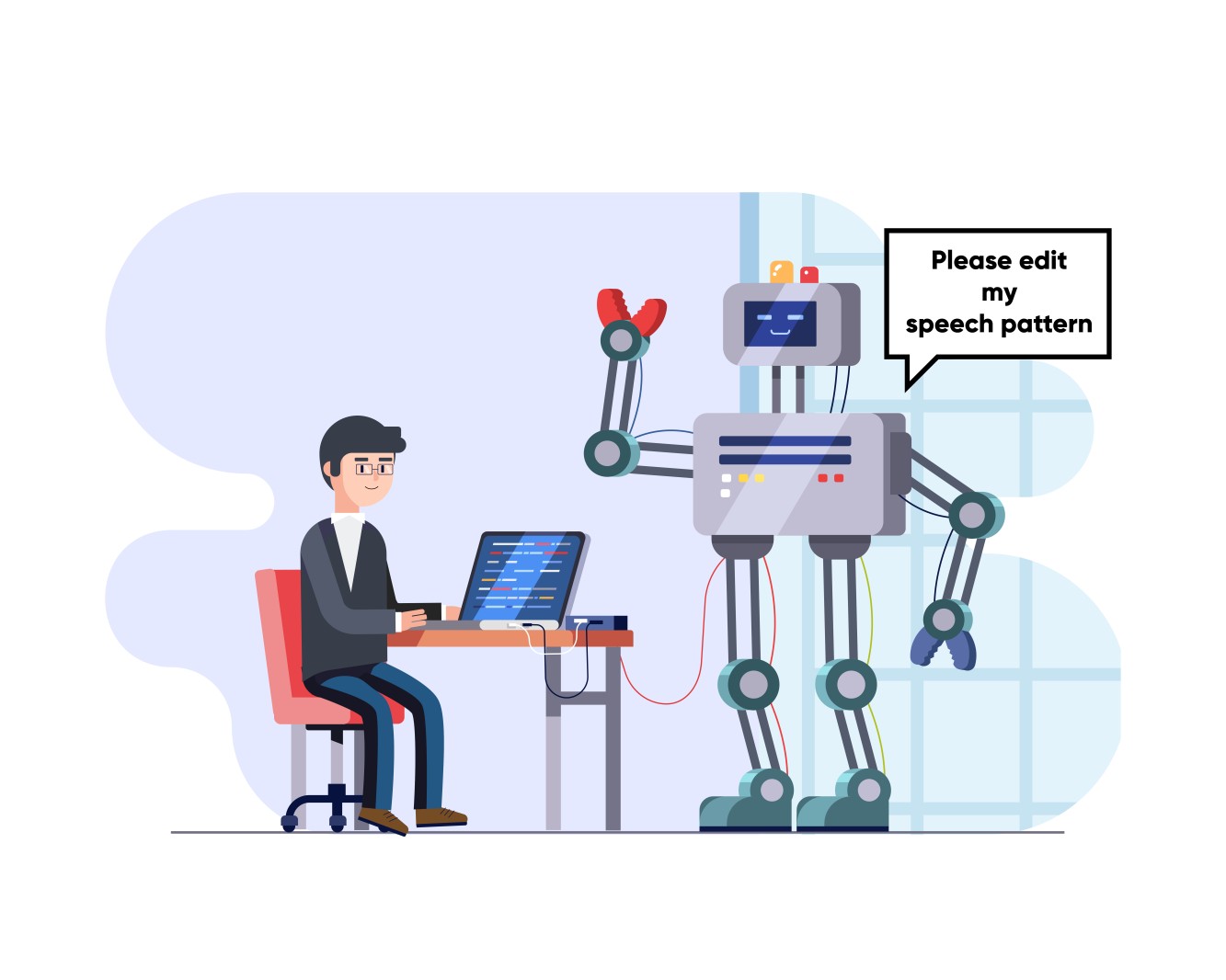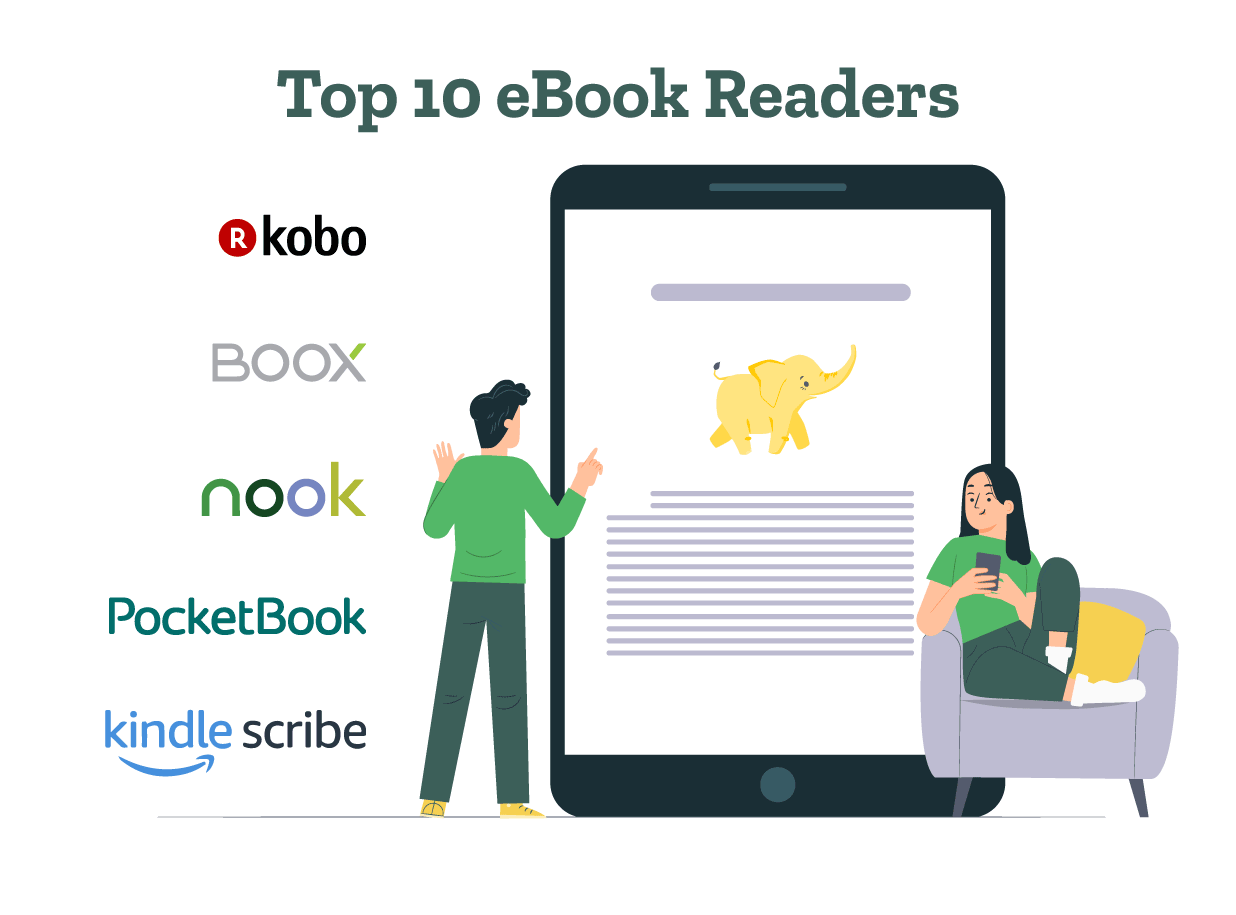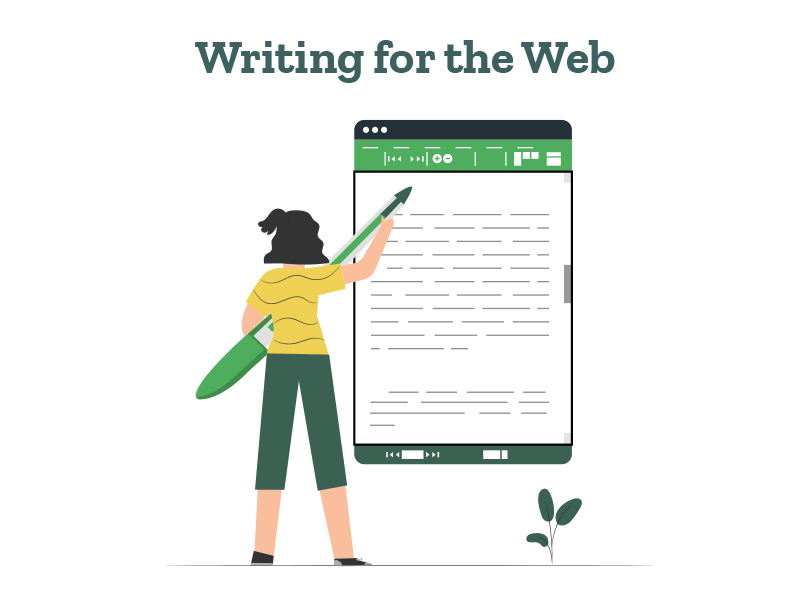Still have questions? Leave a comment
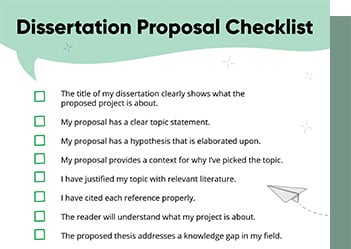
Checklist: Dissertation Proposal
Enter your email id to get the downloadable right in your inbox!
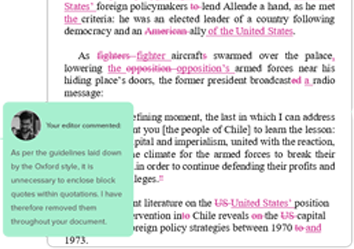
Examples: Edited Papers
Enter your email id to get the downloadable right in your inbox!
Need
Editing and
Proofreading Services?

What is Self-Publishing? Everything You Need to Know
 Jun 23, 2025
Jun 23, 2025 8
min read
8
min read
The number of self-published books in the U.S. has almost tripled in the last six years.
Self-publishing lets authors publish their work independently without dealing with traditional publishing houses. Authors have turned this into a thriving multi-billion-dollar industry that gives writers complete control of their creative work and the chance to earn a lot more money.
This detailed guide will show you everything about self-publishing. You’ll learn different publishing models and see the process step-by-step. The information will help you decide if self-publishing lines up with your goals, whether you’re writing your first book or thinking about leaving traditional publishing behind.
You Wrote The Book. We’ll Handle The Rest! Get Published
What is self-publishing?
Self-publishing lets authors take control of their book’s journey without going through traditional publishing houses. Authors can chart their own path to publication success.
Self-publishing puts authors in charge of managing and funding their book’s publication journey. Authors can publish their work without any third-party publishers. Digital platforms and print-on-demand technology have substantially changed this approach since the internet began. Authors can now publish both physical books and eBooks easily.
Authors who self-publish have complete control of their work’s creative process. They handle everything from writing and editing to formatting, design, and marketing. The authors keep full ownership of their content and can set their own timelines and prices.
What does it mean to self-publish a book?
Self-publishing makes you the publisher of your work. You can handle everything yourself or hire professionals to help with specific tasks. The process needs writing, editing, cover design, content formatting, ISBN numbers, and distribution planning.
Authors can earn more through self-publishing. They get up to 70% royalties on eBooks while traditional publishing only offers 10-15%. This financial benefit and creative freedom make many writers choose this path.
Speed is another advantage. Traditional publishers take months or years to get books into stores. Self-published books can reach readers within weeks.
Types of self-publishing models
The self-publishing world offers different models that match author goals:
Volume publishing focuses on quick book releases and high productivity. Authors create multiple books rapidly and build series to keep readers engaged.
Engagement publishing builds strong reader connections. Authors create communities around their work and stay in touch with their audience.
Craft publishing values artistic quality and creative expression. Authors spend more time perfecting each book rather than rushing to publish more.
Assisted self-publishing guides authors through the process while keeping their creative control. This is different from vanity publishing, which charges authors money but doesn’t offer proper support or let them keep their rights.
Self-publishing vs traditional publishing
Authors face a life-changing decision between self-publishing and traditional publishing paths. Your choice will shape your creative freedom, timeline to publication, and money-making potential.
Creative control and ownership
Traditional publishers want authors to give up much of their creative control. A publishing contract might limit your input on vital elements like cover design, title choice, and content edits. Publishers often change your manuscript based on their priorities. Your contract with them usually means they own most or all rights to your work. This limits what you can do with your content later.
A self-published author keeps full creative control. You get the final say on everything about your book – from editing choices to how it looks. Your original ideas stay exactly as you want them. You also keep all rights to your work. This means you can create audiobooks, translate your work, write sequels, or bundle books without asking anyone’s permission.
Time to market and flexibility
Books take two to three years to reach stores through traditional publishing. The process starts with finding an agent, which takes 1-8 weeks just to hear back. Then comes manuscript review (3-6 months), publisher acceptance (3-4 months), contract talks, and production planning.
Self-publishing moves much faster. Your book can go from finished manuscript to published work in days or weeks. This quick timeline lets you catch market trends or release time-sensitive content. You can also change your content, adjust prices, or try new formats whenever you want. No need to wait for publisher approval.
Royalties and revenue differences
Money makes the biggest difference between these paths. Traditional publishers pay 7-15% royalties after they recover any advance payments. Self-published authors earn much more – between 35% – 70%, depending on price and where they sell.
These numbers add up fast. To name just one example, see how selling 6,000 copies as a self-published author could earn you $35,700. The same sales through traditional publishing would only bring in $8,940. Traditional publishing does save you from upfront costs. Self-published authors pay for professional editing ($500-$5,000), cover design ($200-$1,000), and marketing.
Benefits and challenges of self-publishing
Self-publishing opens exciting possibilities but comes with meaningful challenges. Authors must understand the digital world before making informed decisions about their publishing future.
Advantages of being a self-published author
1. Creative freedom
Authors maintain complete control over their book’s content, cover design, and formatting without any compromise, and there are no pushy editors enforcing arbitrary deadlines.
2. Higher financial rewards
Self-published authors earn 60-70% royalties on digital books compared to only 10-15% through traditional publishing channels, with these higher earnings helping to offset initial investments, especially when building strong reader communities.
3. Faster time to market
While traditional publishing takes 18 months to three years from acceptance to bookshelf, self-published authors can release their work within weeks of completion.
4. Full rights retention
Authors keep all rights to their work and can freely create audiobooks, foreign translations, or other adaptations without needing to ask for permission.
Common challenges and how to overcome them
1. High Upfront Costs
- You’ll need $1,000-$5,000 before your book is ready
- This covers: editing, cover design, formatting, and initial marketing
Solution: Budget carefully and prioritize essential services first
2. You’re Your Own Marketing Team
- No publisher means no built-in promotional network
- You must reach readers on your own
Solution:
Build a strong presence through:
Social media platforms
Your author website
Book events and signings
3. Finding Quality Professionals
- Many editors, designers, and formatters exist, but quality varies
- Hard to know who’s truly skilled
Solution:
Read client reviews carefully
Compare multiple service providers
Stay within your budget while prioritizing quality
4. Overcoming Self-Publishing Stigma
- Some readers still view self-published books negatively
- Poor quality reinforces this bias
Solution:
Invest in an excellent editor (this is crucial!)
Ensure professional-quality work throughout
Match or exceed traditional publishing standards
Is self-publishing right for you?
Authors with entrepreneurial mindsets thrive in self-publishing. This path offers great potential if you enjoy business aspects beyond writing and can dedicate time to marketing, distribution, and production details.
Writers with niche interests often succeed through self-publishing. Traditional publishers might see your work as too specialized for mainstream appeal. Self-publishing lets you reach your specific audience without gatekeepers.
Your timeline needs matter. Self-publishing’s accelerated process benefits those who need quick publication, whether for business purposes or time-sensitive content.
Success in self-publishing comes from balancing creative passion with business sense. You must craft exceptional content while becoming skilled at the many aspects of publishing.
How the self-publishing process works
Self-publishing involves several vital stages that need specific skills and clear decisions. A good understanding of this process will help new authors turn their manuscript into a published book quickly.
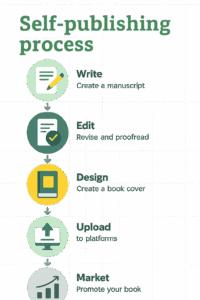
1. Writing and editing your manuscript
Your first task is to create a book that sells well. Take time to study bestsellers in your genre. This will help you spot trends and reader priorities while keeping your unique vision that strikes a chord with readers. The editing process becomes significant after you complete your original draft – this is where “the real magic happens”.
Start by self-editing to polish your storyline and characters. Your next step should be sharing your work with beta readers who can give constructive feedback. Professional editors are a great investment for your book. Quality self-published books typically go through multiple editing stages:
- Developmental editing: Addresses structural issues like plot and character development
- Copy editing: Corrects grammar, punctuation, and improves sentence structure
- Proofreading: Provides final polish to catch remaining errors
2. Designing your book cover and layout
A compelling book cover is your strongest marketing tool that can double your sales. You can create designs using templates from platforms like Canva or Adobe Express, or hire professionals (typically USD 500-800 for quality work).
Your book’s interior format matters just as much. Publishing standards dictate specific margins, font selection, and spacing requirements. Reedsy’s free book formatting tool can prepare your manuscript in under an hour.
PaperTrue can create amazing professional book covers to bring your stories to life!
3. Choosing a self-publishing platform
Your choice of distribution platforms should align with your format priorities. Ebook publishers can distribute directly through retailers to keep all profits or use aggregators to reach multiple platforms. Print book authors should look into print-on-demand services like Kindle Direct Publishing (KDP), IngramSpark, and even PaperTrue.
Each platform has its own royalty structure and distribution reach. KDP gives 70% royalties for ebooks priced USD 2.99-9.99, while IngramSpark offers 45-65% with wider distribution potential.
4. Marketing and promoting your book
Smart marketing starts before publication. You should build your author platform through a website and a focused social media presence. Early reviews from family, friends, and influencers will boost your book’s credibility.
Strategic pricing works well with pre-order campaigns and promotional discounts. Newsletter promotion services like Freebooksy can help, and Amazon ads can start from just USD 5 per month. Your book’s success depends heavily on effective marketing, no matter how good it is.
Why authors choose to self-publish
Publishing has changed in remarkable ways. More authors now take the self-publishing path. This change goes beyond just having new options – it shows how writers view their craft and careers differently now.
Creative control draws many authors to self-publishing. Self-published authors keep full control of their book’s content, formatting, and cover design, unlike traditional publishing. Writers can stay true to their vision without any compromises from publishing committees.
Money plays a big role in self-publishing decisions. Traditional publishers give royalties of 10-15%, while self-published authors can earn between 50-70% of their book’s list price. This means self-published authors make about five times more money per book than their traditionally published peers.
Authors choose self-publishing for several personal reasons:
- They want to preserve their family’s stories
- They have special knowledge for specific readers
- They plan to build speaking or consulting businesses
- They want to test new ideas freely
- They need to write about current trends quickly
- They want to keep rights for movies, TV shows, or other adaptations
Self-publishing breaks down the walls between writers and readers. It makes publishing accessible to anyone who wants to share their stories or knowledge with the world.
What to expect after you self-publish
Your book’s publication marks just the beginning. The “publish” button click changes your life as publishing tasks consume every moment – even during laundry, your mind drifts to social media posts, blog topics, and marketing possibilities.
Self-published authors quickly become their own best promoters. Many authors hope for publisher support, but this path often guides them to disappointment. Daily life shifts to include website updates, promotion coordination, and review tracking.
Reality hits hard with book sales. Authors face disappointment when supportive friends who cheer announcements don’t buy books. The average self-published digital book sells about 250 copies in its lifetime. Some self-published authors reach remarkable success with six-figure incomes, yet published authors’ median annual income stood at just $2,000 in 2022.
The post-publication phase needs you to:
- Reach out to bookstores and libraries (many libraries accept only local authors’ books)
- Build reader connections through newsletters and social media
- Stay alert to scammers targeting new self-published authors
- Focus on your next book since your backlist becomes your strongest marketing asset
With this complete understanding, you can now decide if self-publishing matches your goals as an author. This path lets you join countless writers who connect directly with readers worldwide, bypassing traditional gatekeepers.
PaperTrue is here to help you throughout your whole self-publishing journey. We provide expert self-publishing services from editing to publishing. Check out our website and start your publishing journey today!
Liked the article? Keep on reading:
Frequently Asked Questions




